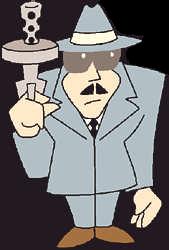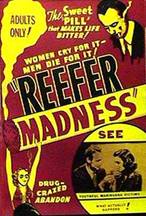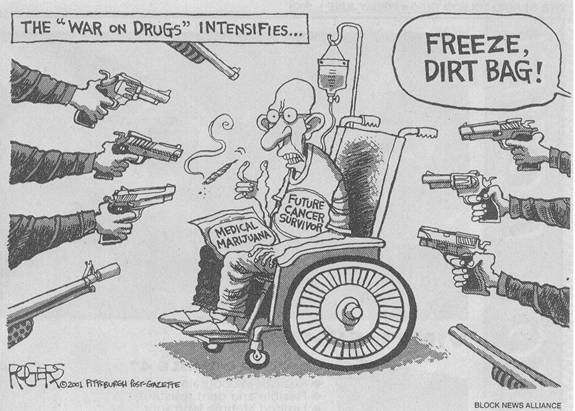Part 1: History and Science of Illegal Drugs
Given what has been said about liberty, privacy, the harm principle, and paternalism there should be a considerable amount to say about the question of criminalizing drug use. Before we can determine if drug use should be criminalized, we need to have a basic understanding of various drugs, their historical uses, effects on users, and reasons why society deemed them "immoral" and then illegal. To this end, I will provide brief summaries on marijuana, opium, morphine, heroin, cocaine, speed, LSD, and XTC. Much of this information is drawn from historical documentation. In addition to the historical account, I have provided some general scientific information of the effects of these drugs. It is important to remember that the science of these drugs is sketchy as very little independent research has been done (or permitted) and much of the research that has been done is often disputed. I will begin focusing on the drugs individually. Then, after this individual account, I will fill in the details of the federal U.S. drug laws, which are mentioned in the assigned textbook readings.
Marijuana
History in Brief: Perhaps the drug that garners the most attention when it comes to recreational use is marijuana. There are many non-drug related uses of the marijuana plant. Among them were the production of rope and  clothing. However, our interest is in its use as a drug. Historically there have been several uses, among them: Ancient cultures would burn marijuana in tents at social gatherings and it was used in China and India as medicine (cramps, appetite, and pains). India 's Goddess Shiva was said to have given marijuana to man as a recreational gift. Marijuana was made known in Europe by Napoleon's troops who brought it back from their campaigns in North Africa . England 's Queen Victoria used it to ease the pain from cramps. In colonial America , it was encouraged as a cash crop for rope, sails, medicine and clothes. In 1887 (at the 100 Year Fair in America ) a Turkish sultan sent a large gift of bongs with pot to fair visitors, and the marijuana habit begins to catches on.
clothing. However, our interest is in its use as a drug. Historically there have been several uses, among them: Ancient cultures would burn marijuana in tents at social gatherings and it was used in China and India as medicine (cramps, appetite, and pains). India 's Goddess Shiva was said to have given marijuana to man as a recreational gift. Marijuana was made known in Europe by Napoleon's troops who brought it back from their campaigns in North Africa . England 's Queen Victoria used it to ease the pain from cramps. In colonial America , it was encouraged as a cash crop for rope, sails, medicine and clothes. In 1887 (at the 100 Year Fair in America ) a Turkish sultan sent a large gift of bongs with pot to fair visitors, and the marijuana habit begins to catches on.
During the U.S. prohibition of alcohol, marijuana becomes most popular legal drug and is used frequently by jazz musicians. During the Great Depression, marijuana becomes associated with cheap Mexican labor (who took jobs from local laborers). As a result, the first marijuana laws appear in  southwestern states and are used as a pretext to arrest and deport cheap Mexican laborers. The first national law regulating marijuana was in 1937 when Congress passes the Marijuana Stamp Tax. This law was fashioned after the Machine Gun Act. After the First World War, America had no gun laws, so people (and gangsters) were free to wander the streets with machine guns. Since the Second Amendment would prevent a law banning machine guns (at least that's what they thought then) Congress instead passed the machine gun act, which required that you have a stamp on your gun showing that you paid a tax on that gun. The trick was that they only provided the post office with a handful of stamps each year so most people could not get them and therefore could be arrested for not paying a tax on their machine gun (rather than arrest them for having a machine gun). The Marijuana Tax Stamp was similar in that if you had marijuana but did not have a stamp for it, you could receive a 5-year jail penalty for "tax evasion." However, this time Congress built into the law that in order to obtain a stamp at the post office, you needed to bring in your pot to get it. Of course, once you showed your stash (which did not yet have a stamp) you were promptly arrested for violation of the law. As you can see, this was a "catch 22" situation as there was no legal way to get the stamp without breaking the law. But the intent of the Tax Stamp Act was to ban marijuana, since at the time it was thought that the Constitution's "life, liberty, and pursuit of happiness" guaranteed Americans to use drugs recreationally (Oh, how things have changed!).
southwestern states and are used as a pretext to arrest and deport cheap Mexican laborers. The first national law regulating marijuana was in 1937 when Congress passes the Marijuana Stamp Tax. This law was fashioned after the Machine Gun Act. After the First World War, America had no gun laws, so people (and gangsters) were free to wander the streets with machine guns. Since the Second Amendment would prevent a law banning machine guns (at least that's what they thought then) Congress instead passed the machine gun act, which required that you have a stamp on your gun showing that you paid a tax on that gun. The trick was that they only provided the post office with a handful of stamps each year so most people could not get them and therefore could be arrested for not paying a tax on their machine gun (rather than arrest them for having a machine gun). The Marijuana Tax Stamp was similar in that if you had marijuana but did not have a stamp for it, you could receive a 5-year jail penalty for "tax evasion." However, this time Congress built into the law that in order to obtain a stamp at the post office, you needed to bring in your pot to get it. Of course, once you showed your stash (which did not yet have a stamp) you were promptly arrested for violation of the law. As you can see, this was a "catch 22" situation as there was no legal way to get the stamp without breaking the law. But the intent of the Tax Stamp Act was to ban marijuana, since at the time it was thought that the Constitution's "life, liberty, and pursuit of happiness" guaranteed Americans to use drugs recreationally (Oh, how things have changed!).
 A national propaganda war declares that marijuana causes suicide, murder, sex and insanity. Movies are made to reflect the "evils of marijuana" such as the film Reefer Madness . These claims were not scientifically demonstrated. For instance, Mayor LaGuardia of New York established a blue ribbon scientific panel to study the effects of marijuana. The panel concluded that marijuana was not addictive, it was not a problem with school kids, and was not a cause of crime. Shortly after this study, the federal government ends open marijuana testing (you now need government approval to use marijuana in a study). In the 1960's Timothy Leary gets the Supreme Court to overturn the Marijuana Tax Stamp Act. In 1970 Congress bans marijuana on the grounds that it has no medicinal purpose. Today, at least 11 states officially allow medical use of marijuana (and more states are pushing similar laws). Despite these state laws, the federal government still arrests people in these states citing federal drug laws.
A national propaganda war declares that marijuana causes suicide, murder, sex and insanity. Movies are made to reflect the "evils of marijuana" such as the film Reefer Madness . These claims were not scientifically demonstrated. For instance, Mayor LaGuardia of New York established a blue ribbon scientific panel to study the effects of marijuana. The panel concluded that marijuana was not addictive, it was not a problem with school kids, and was not a cause of crime. Shortly after this study, the federal government ends open marijuana testing (you now need government approval to use marijuana in a study). In the 1960's Timothy Leary gets the Supreme Court to overturn the Marijuana Tax Stamp Act. In 1970 Congress bans marijuana on the grounds that it has no medicinal purpose. Today, at least 11 states officially allow medical use of marijuana (and more states are pushing similar laws). Despite these state laws, the federal government still arrests people in these states citing federal drug laws.

Science in Brief
- Marijuana has not been proven to be addictive.
- Marijuana use causes relaxation.
- Marijuana use causes an increased appetite.
- Marijuana can cause paranoia.
- Marijuana does not directly cause death or overdose.
- Some studies indicate that long-term use can impact quickness of mind.